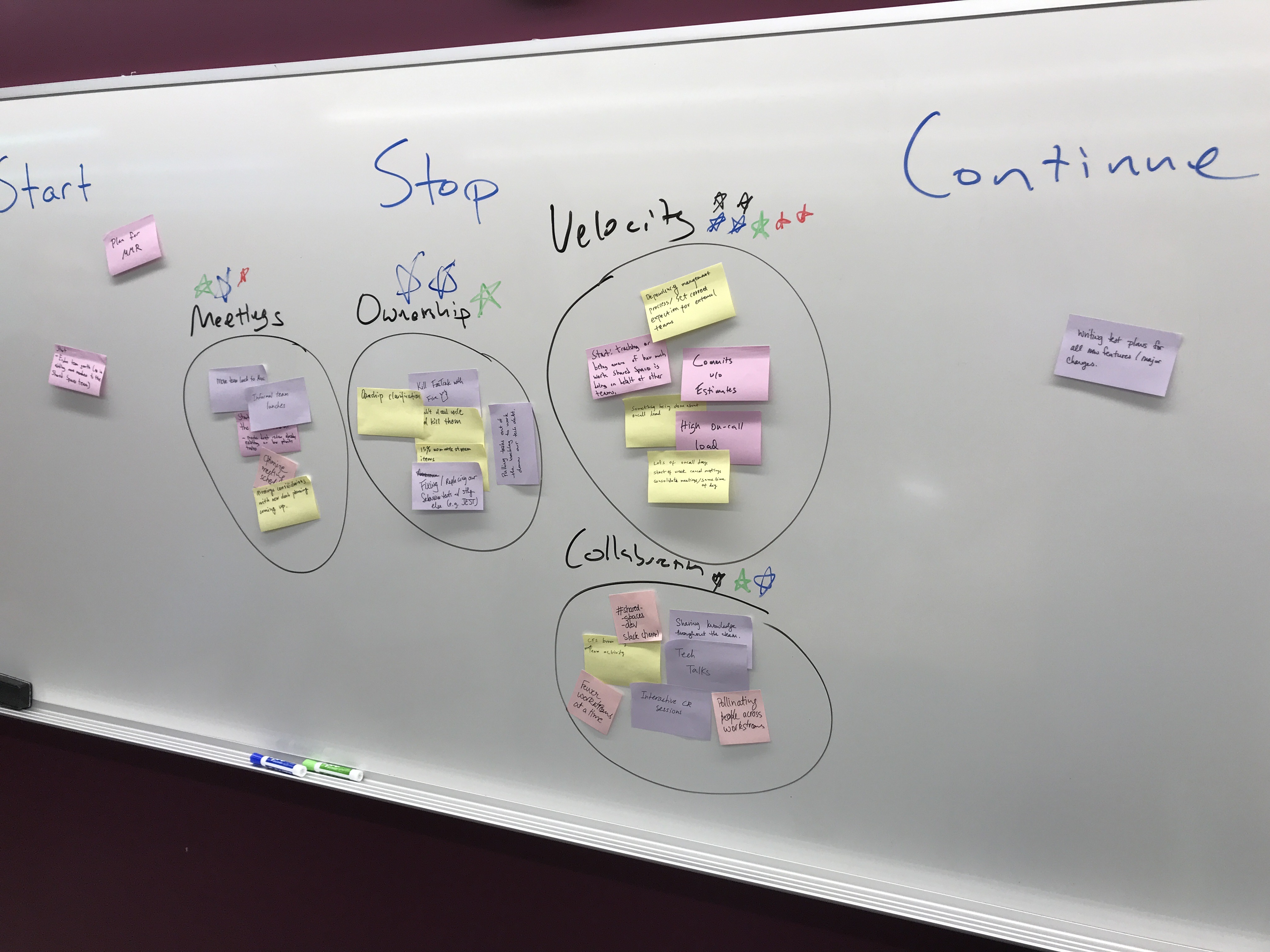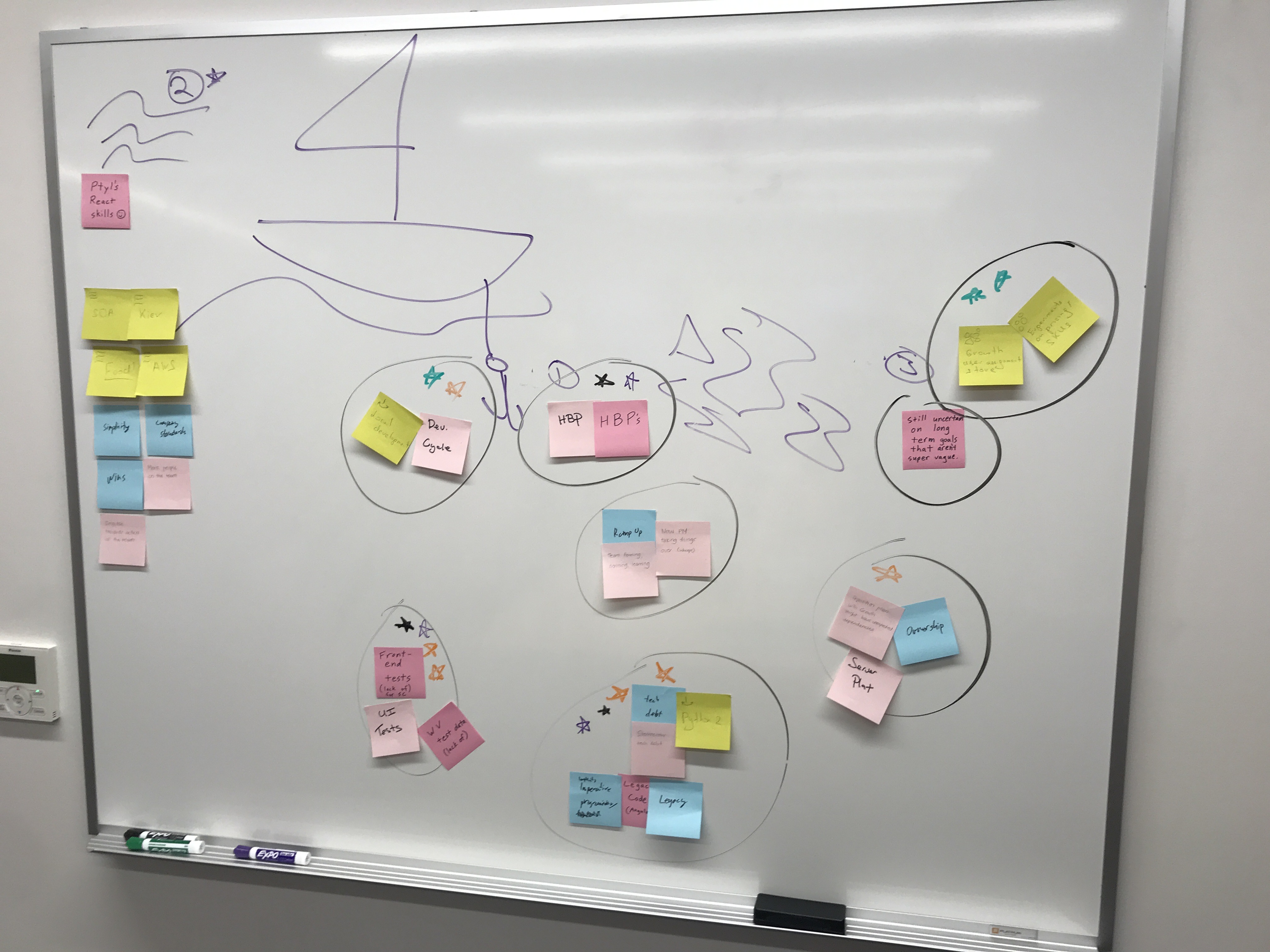A retrospective is a team meeting following a sprint, a quarter, or a specific project. The team talks about what went well, what didn’t go well, and what they could do better. Everyone has a chance to voice their ideas on how to improve the team. Over time, the team builds a set of best practices that they truly feel ownership over. You may even surface some feedback that you never would save seen, otherwise.
As an engineering manager, my teams always did retrospectives every two weeks, at the end of a sprint. I’ve probably been in something like 250 retrospectives, and I’ve run about 80% of those. Running a retrospective is easy. If you’re looking to get started as a facilitator, this blog post should get you up and running quickly.
Note: the manager’s role in a retrospective is to facilitate the conversation, not steer it. You want to be cautious about offering your own ideas. Besides facilitating, the most useful thing you can do is make sure the action items get completed.
Basic Retrospective Format
Your first job as a facilitator is to create psychological safety. I like to include this quote in the agenda doc, or on the calendar item itself.
Regardless of what we discover, we understand and truly believe that everyone did the best job they could, given what they knew at the time, their skills and abilities, the resources available, and the situation at hand.” – Norm Kerth, Project Retrospectives: A Handbook for Team Review
The most common retrospective format is brainstorming, voting, discussion, and action items. Here is a sample agenda for a 60 minute team retrospective:
- Give the team a prompt, for example “How could we be moving faster?”. Write the categories Start, Stop, and Continue on the whiteboard.
- Silent brainstorming, team members write ideas down on sticky notes (10 minutes)
- Team members take turns putting their stickies on the whiteboard, quickly summarizing each one (10 minutes)
- Silent grouping into themes, for example “Testing” (5 minutes)
- Voting on top themes, everyone gets 3 votes, put stickers or use a whiteboard marker to vote on a theme (5 minutes)
- Discuss the top 3 themes, and generate one action item per theme (25 minutes)

Variations on Prompts
This is the most effective way to steer the retrospective, as a manager. If they team is having issues reliably executing, the prompt should be some variation of that. Other prompts:
- How could we increase the quality of our work?
- How could we be working together as more of a team?
- How could we run more efficiently?
Variations on Categories
Most retrospectives will follow this basic format. To keep things interesting, the facilitator can change up the brainstorm categories.
- Wishes, Complaints, and Puzzles
- Headwinds, Tailwinds, and Anchors
- Glad, Sad, and Mad
Action Items
As the facilitator, you want to steer the team away from having too many action items. You want the team to commit to actually completing a small set of action items, versus having an exhaustive list. Remind the team that they will be able to generate more action items next retrospective.
Common action items:
- Update the team’s working agreement
- Update the team’s definition of done
- Update the team’s user story, test plan, or deploy checklist template
Alternative Retrospective Formats
If you’re looking for additional ideas, I recommend the book Agile Retrospectives: Making Good Teams Great. It covers not only many different brainstorming prompts, but also entirely different agendas and formats.
Sailboat Retrospective
In a “sail boat” retrospective, teams that find themselves in dangerous waters imagine challenges they face as anchors, headwinds, and treacherous rocks.

Timeline Retrospective
In a “timeline” retrospective, teams look back at a long term project that is wrapping up, and try to recall what happened when, and how they felt about it.

Looking for even more ideas? Check out Retromat which can generate a random retrospective agenda for you.
Agenda Add-ons
If the retrospective is your only reliable, frequent whole-team meeting, you might want to include some additional agenda items.
- Reviewing the previous sprint, what was shipped, and what slipped? This can help generate ideas for the brainstorm.
- Kudos! Go around the room and thank each other for something specific. This can help break the ice and prime individuals to share.
- Do a light anonymous team health survey. How are you feeling from 1-10 about a few key questions. Record the scores over time.
- Quick +/-/delta about the retrospective itself. What should we do differently next time?
Tooling for Virtual Retrospectives
Most of the retrospectives I have been involved in were in-person, using sticky notes and a whiteboard. Virtually, you can replicate that experience with something like stickies.io. You could also use Miro, Trello, or any collaborative text editor.

The Retrospective Scorecard 💯
Is your team following best practices?
- Retrospectives happen every sprint
- The whole team is present
- Generate a small number of action items
- Previous action items are completed
